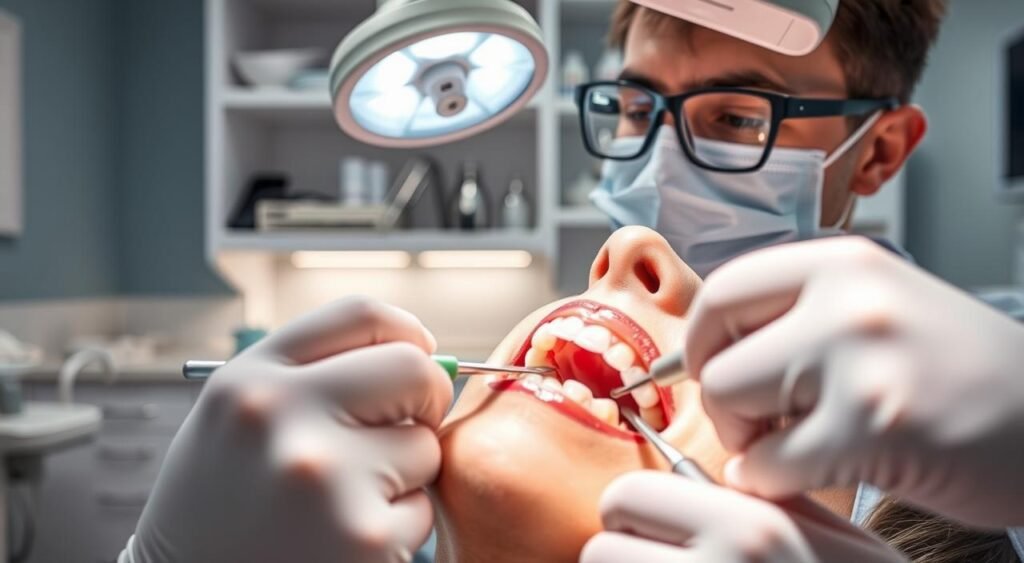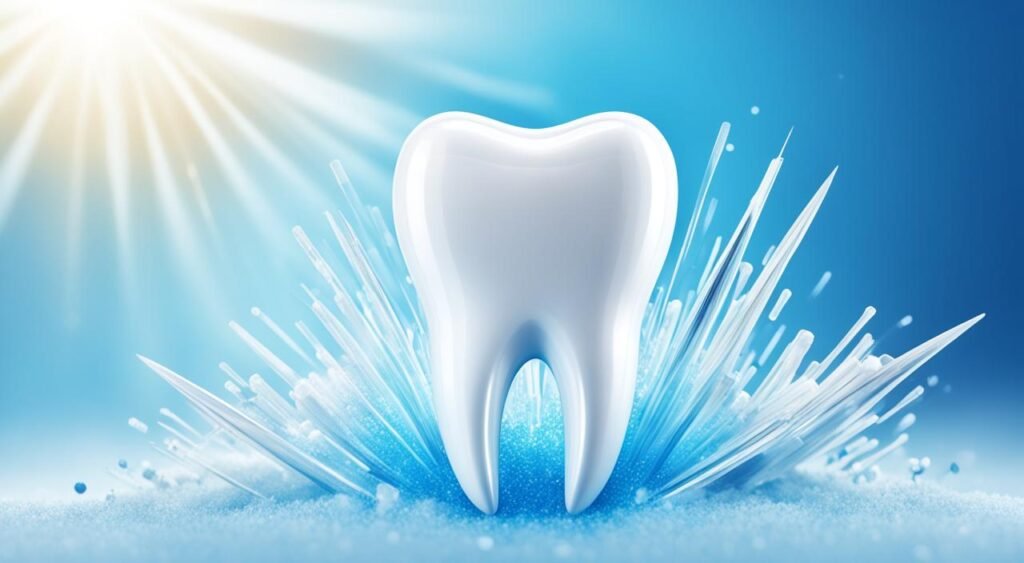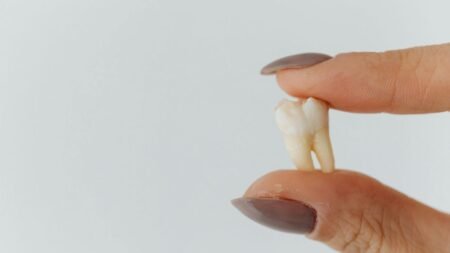What really happens when you extract a tooth that is infected?
Tooth extraction is a common procedure that can greatly improve your oral health. It’s especially useful when dealing with severe decay or damage. By removing an infected tooth, you get rid of harmful bacteria and promote a healthier mouth.
However, taking good care of yourself after the extraction is key. This is to prevent infections that can get worse quickly. Most people see some swelling and redness, but watch out for signs of infection.
Some things can make you more likely to get an infection after the extraction. These include smoking and not taking good care of your mouth. Signs of infection include a lot of swelling, pus, and a fever.
Following your dentist’s advice and watching for any strange symptoms is important for a quick recovery. Keep reading to learn more about how to take care of yourself and lower your infection risk.
Understanding Tooth Extraction and Infection Risks
Tooth extraction is a common dental procedure. It’s important to know the risks of infection and how to prevent them. This guide will help you understand why teeth are extracted and how to spot signs of infection after.
Common Reasons for Extracting a Tooth
There are many reasons why a tooth might need to be removed. Severe tooth decay or trauma that can’t be fixed is a common reason. Impacted wisdom teeth also often need removal. Not forming a clot after extraction can increase the risk of infection. Other reasons include:
- Severe tooth decay that compromises the structure
- Tooth trauma that can’t be repaired
- Impacted wisdom teeth causing pain or infection
- Crowded teeth that affect alignment
Identifying the Signs of Infection Post-Extraction
It’s key to take good care of yourself after tooth extraction to prevent infection. Look out for signs like more pain, bad breath, a fever over 101 degrees, and pain that doesn’t get better with medicine. Other signs include swelling, bleeding that doesn’t stop after 24 hours, and pus or a bad taste.
These signs are serious and need attention to avoid serious conditions like sepsis. Dry socket is another issue that can be very painful and needs quick dental care.
Reducing the Risk of Infection After Your Procedure
To prevent infections after dental extraction, follow your dentist’s instructions carefully. Here are ways to lower your risk:
- Avoid smoking: Smoking can greatly increase the chance of infection.
- Avoid straws: They can dislodge the blood clot needed for healing.
- Maintain oral hygiene: Clean gently around the extraction site and rinse with saltwater.
- Monitor symptoms: Watch for normal healing signs like redness and swelling, and look out for infection signs.
Following these steps can greatly reduce the risk of infection. If you think you have an infection, see a dentist like Maiden Lane Dental in New York right away. Knowing why teeth are extracted and how to prevent infections is key to good oral health.
Extract a Tooth That Is Infected: The Procedure Explained
Getting a tooth pulled with an infection can seem scary, but knowing what happens can ease your worries. First, the dentist numbs the area with a local anesthetic so you won’t feel pain. For harder cases, like impacted teeth, you might need sedation.
The dentist or oral surgeon uses special tools to gently loosen the tooth. If the tooth has an abscess, they’re extra careful to stop the infection from spreading. One big risk of pulling out an abscessed tooth is the infection could go into your bloodstream. So, they use antibiotics before the procedure to prevent this.
After loosening the tooth, it’s removed carefully. This might mean cutting through gum tissue and removing some bone. You might wonder, “does getting an abscessed tooth pulled hurt?” But, the anesthesia and sedation make it as painless as possible.

After taking out the tooth, it’s important to let a blood clot form at the site. This clot protects the bone and nerves underneath. If the clot doesn’t form or gets knocked out, you could get dry socket. This makes healing longer and more painful.
Watch for signs of infection like swelling, a lot of pain, bleeding, or losing the blood clot. If you see any of these, call your dentist right away. Some people, like those with weak immune systems, need extra care to avoid problems after the procedure.
Right after the procedure, bite on gauze pads to help the blood clot. Use ice packs on your face to reduce swelling. Following these steps and keeping an eye on your healing can make things go smoother and lower the risks of complications.
Immediate Aftercare: What You Should Do Following Extraction
After a tooth extraction, it’s key to follow the right aftercare steps for a smooth recovery. Doing so can greatly help your healing and lower the chance of problems.
The Importance of a Proper Blood Clot
A solid blood clot at the extraction site is crucial for fighting off infection and healing well. Keep gauze in place for the first 3-4 hours to help clotting. Also, avoid rinsing, smoking, and using straws for at least 24 hours. This keeps the blood clot strong, which helps in managing pain after tooth extraction by protecting the area.
Managing Swelling and Discomfort with Cold Compresses
Swelling is common after a tooth extraction. To reduce it, use a cold compress on your face in ten-minute intervals. Keep doing this for the first 24 hours for best results. Taking pain medication as directed before the numbness goes away can also make the early recovery easier.
Best Practices for Oral Hygiene Post-Extraction
Keeping your mouth clean after tooth removal is vital but be careful not to disturb the extraction site. Brush your teeth gently, skipping the area where the tooth was removed. Eat soft foods like pasta, eggs, and yogurt for the first week to avoid irritation. Drink plenty of water and take any antibiotics as ordered to prevent infection. And, don’t smoke as it can slow healing and make you more uncomfortable.
Identifying and Treating Infections After Tooth Removal
Tooth extraction is a common dental procedure. But, it’s important to watch for signs of infection to ensure a smooth recovery. Being alert for early signs can help prevent serious problems.
Warning Signs Your Extracted Tooth Site May Be Infected
Signs of infection at the tooth extraction site can show up within days or even weeks after the procedure. Look out for ongoing pain, swelling that gets worse, pus, and a fever. Spotting these signs early is key to catching infections before they get worse.
When to Contact Your Dentist for a Suspected Infection
If you think you might have an infection after tooth extraction, it’s crucial to see your dentist right away. Don’t wait if you notice any signs of infection. Quick action helps your dentist treat the infection before it gets worse.
Types of Treatment for Dental Infections
There are different ways to treat dental infections, based on how bad they are. Doctors might prescribe antibiotics to fight bacteria and perform drainage to clear out pus. If the infection is severe, surgery might be needed to treat the jaw bone or nearby tissues. Studies show that dentists are now prescribing antibiotics more carefully, highlighting the need for proper dental care.
Conclusion
Getting an infected tooth pulled and recovering well needs the right knowledge and careful aftercare. The time it takes to pull a tooth can range from 20 minutes to an hour. This depends on where the tooth is and its condition. Afterward, it’s important to watch closely to avoid any problems.
If a tooth infection is not treated, it can cause a lot of pain, swelling, and even infections in other parts of your body. So, it’s key to know how to take care of yourself after removing an infected tooth. Sometimes, removing the infected tooth might not get rid of the infection if it has spread. You might need more treatment. Doctors often give antibiotics after the extraction to help clear any remaining infection and help healing.
Taking good care of your mouth, like brushing, flossing, and seeing the dentist regularly, helps with recovery and prevents future problems. For example, a 44-year-old woman had an extraction followed by an apicoectomy and retrograde amalgam seal. These steps were important for a good outcome, including putting the tooth back in and making sure it stays in place.
So, can a tooth abscess go away after extraction? It depends on if the infection has spread beyond the tooth. Working closely with dental experts like those at Windy City Family Dental or Dr. Bateson at Bateson Dentistry is key. Their knowledge and your effort in taking care of yourself will help you recover quickly and get your mouth healthy again.
FAQ – Tooth Extraction and Infections
What are the common reasons for extracting a tooth?
Teeth are often removed because of severe decay, infection, or damage. Wisdom teeth that don’t fit properly might also be taken out.
How do I identify signs of infection after tooth extraction?
Watch for swelling, bleeding that won’t stop after 24 hours, fever, or pus. A bad taste in your mouth is also a sign. If you see these, call your dentist right away.
How can I reduce the risk of infection after my procedure?
Follow your dentist’s advice on aftercare. Keep your mouth clean, don’t smoke, and avoid using straws. Eat soft foods and rinse with saltwater as told.
What does the procedure for extracting an infected tooth involve?
First, the dentist numbs the area. Then, they gently loosen and remove the tooth. This method aims to make recovery smooth and complication-free.
Are there dangers associated with pulling an abscessed tooth?
Yes, improper removal can spread infection. It’s important to have a professional dentist do it to manage any risks.
Does getting an abscessed tooth pulled hurt?
With local anesthesia, the procedure is painless. But, you might feel some discomfort later. This can be eased with pain meds.
How important is the formation of a proper blood clot after extraction?
A proper blood clot is key for healing and preventing infection. Avoid smoking and using straws to keep it in place.
How do I manage swelling and discomfort following extraction?
Use cold compresses for swelling, and take pain meds as directed. Stick to your dentist’s advice for the best recovery.
What are the best practices for oral hygiene post-extraction?
Clean gently around the area, don’t rinse hard, and avoid smoking. Use saltwater rinses as your dentist suggests.
What are the warning signs that an extracted tooth site may be infected?
Look out for more swelling, pus, ongoing pain, or a fever. Call your dentist if you see these signs.
When should I contact my dentist for a suspected infection?
Call your dentist if you think you have an infection. Quick action is key to preventing more problems.
What types of treatments are available for dental infections?
You might get antibiotics, a draining procedure, or surgery. Your dentist will choose the best treatment based on the infection’s severity.








